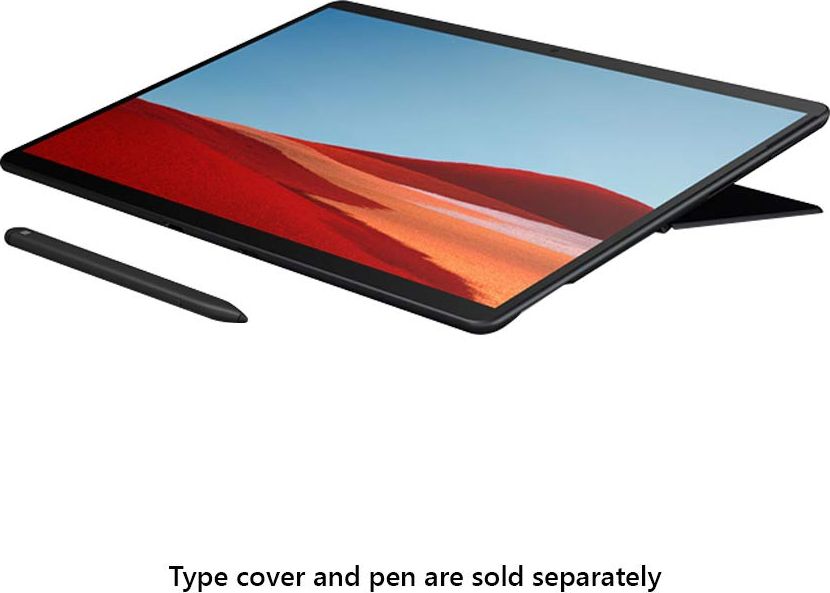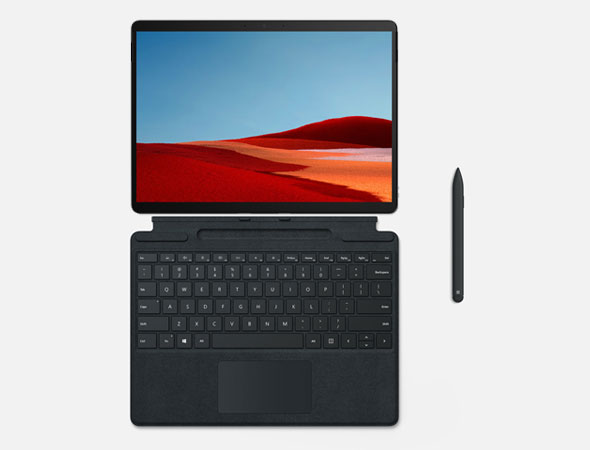


It works well, even in poorly-lit rooms, and it's surprisingly fast. Once it's set up (which only takes a few minutes), you should be able to bypass entering your password every time you flip open your Surface, as long as the webcam and infrared sensors can recognize your face. Like many Windows computers, you can sign into the Surface Pro X using Windows Hello facial recognition. Windows Hello Sign-In is impressively fast

There's even a slot above the keys to hold your stylus in place, should you choose to snag one. The keyboard itself is spacious, and its keys have enough depth to help prevent discomfort over long typing sessions. If you're familiar with the Surface Pro's traditional covers, it's pretty much the exact same thing: it attaches to the bottom of the Surface via a strip of magnets and can be positioned at two different angles for your preferred typing experience. Once you latch a keyboard onto each tablet, the Surface Pro X comes out slightly ahead at a total of 2.38 pounds, which is significantly lighter than the iPad Pro with Magic Keyboard's 3.0 pounds. At just 1.7 pounds (without the Type Cover attached), it's a bit heavier than the 12.9-inch iPad Pro, but that's without Apple's Magic Keyboard attached. They're minor changes, but they give the Pro X a sleeker, more distinguished look. Its edges are more rounded, and its bezels are thinner than on the Surface Pro 7. There are a few key differences, though, that makes the Pro X look slightly more refined. The Surface Pro X looks pretty similar to other Microsoft Surfaces at first glance: it's a big slab of glass with a 3:2 aspect ratio and a nifty kickstand on the back to hold itself up. Apps from the Microsoft Store are generally fine, but that's a limited selection, and getting support for these legacy applications will still take some time.The Surface Pro X's kickstand is sturdy and provides plenty of viewing angles to suit your needs. Microsoft polished the software experience when it came to running Windows on ARM, and it shows here. When it comes to running apps, I had very few problems with most of the apps I tested. When it comes to web-based tasks, you will encounter very few performance issues, but I will note that occasionally, I experienced random hangs while watching videos. I got through entire workdays just fine when I was on the browser (preferably Edge, since it's better optimized on ARM), using social media, watching Netflix, and getting on Zoom calls. The device runs fine when you throw web-based apps on it. In my testing, the Surface Pro X delivered subpar performance, but generally speaking, it was inconsistent the best way to describe using this computer would be to treat it like a Chromebook that runs Windows. You can spec up the SQ2 devices with up to 512GB, but there are no RAM upgrades here. Our review unit came with 16GB of RAM and 256GB of storage.


 0 kommentar(er)
0 kommentar(er)
